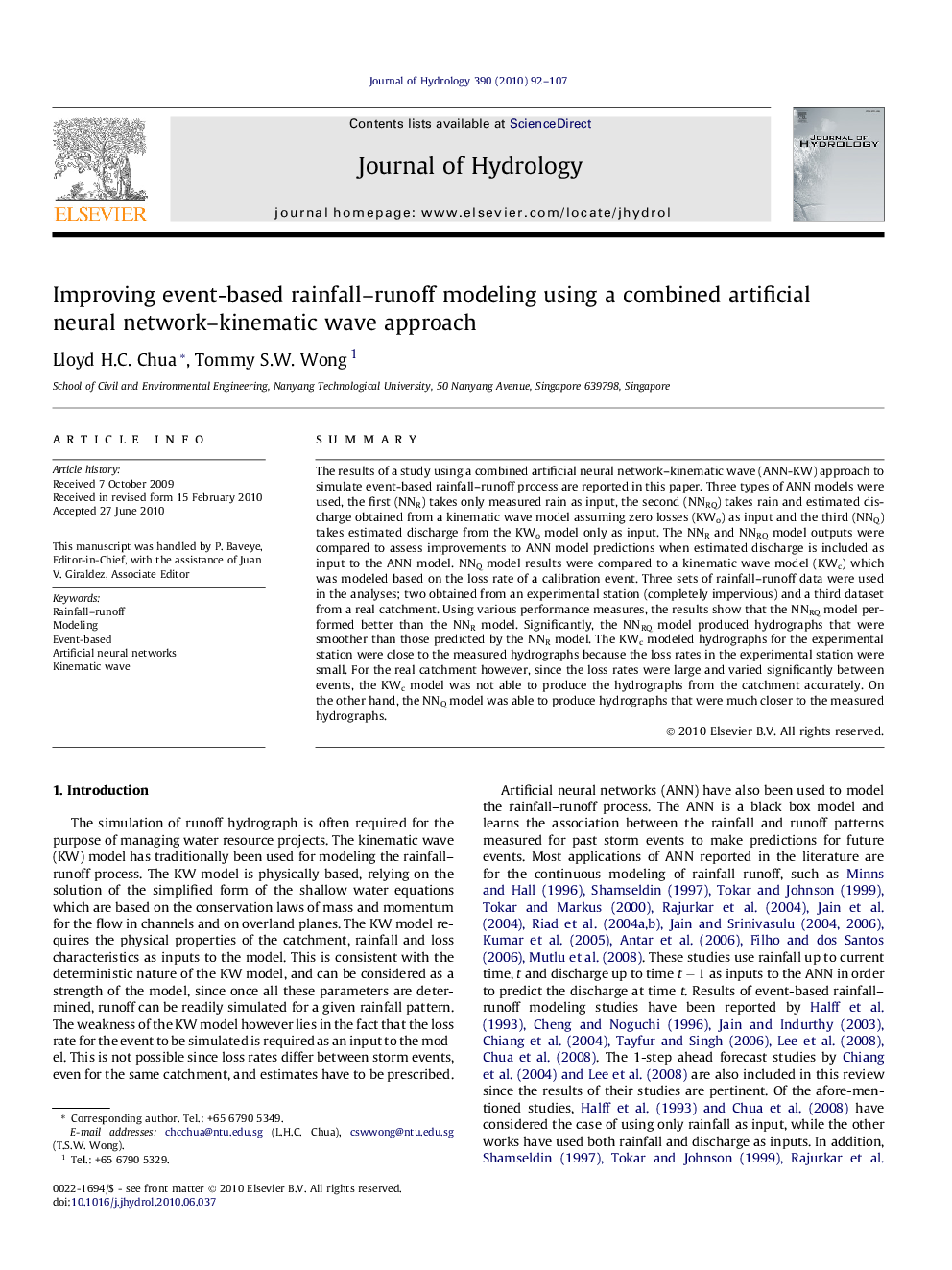| Article ID | Journal | Published Year | Pages | File Type |
|---|---|---|---|---|
| 4578147 | Journal of Hydrology | 2010 | 16 Pages |
SummaryThe results of a study using a combined artificial neural network–kinematic wave (ANN-KW) approach to simulate event-based rainfall–runoff process are reported in this paper. Three types of ANN models were used, the first (NNR) takes only measured rain as input, the second (NNRQ) takes rain and estimated discharge obtained from a kinematic wave model assuming zero losses (KWo) as input and the third (NNQ) takes estimated discharge from the KWo model only as input. The NNR and NNRQ model outputs were compared to assess improvements to ANN model predictions when estimated discharge is included as input to the ANN model. NNQ model results were compared to a kinematic wave model (KWc) which was modeled based on the loss rate of a calibration event. Three sets of rainfall–runoff data were used in the analyses; two obtained from an experimental station (completely impervious) and a third dataset from a real catchment. Using various performance measures, the results show that the NNRQ model performed better than the NNR model. Significantly, the NNRQ model produced hydrographs that were smoother than those predicted by the NNR model. The KWc modeled hydrographs for the experimental station were close to the measured hydrographs because the loss rates in the experimental station were small. For the real catchment however, since the loss rates were large and varied significantly between events, the KWc model was not able to produce the hydrographs from the catchment accurately. On the other hand, the NNQ model was able to produce hydrographs that were much closer to the measured hydrographs.
